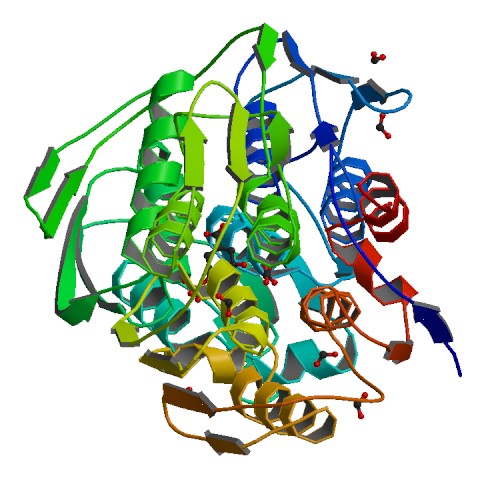Part:BBa_K2586020
AroA*: Resistant aroA-variant in Escherichia coli
This part encodes a resistant variant to the native aroA gene of Escherichia coli. The resistance occurs due to 2 point mutations within the DNA sequence. At position 287 a Guanin was changed to a Cytosin and at position 547 a Guanin was changed to an Adenin.
This part can be used to confer glyphosate resistance to bacteria, as the mutation decreases the interaction of the herbicide with the EPSP-Synthase, which is encoded by the native aroA gene.
Sequence and Features
- 10COMPATIBLE WITH RFC[10]
- 12COMPATIBLE WITH RFC[12]
- 21COMPATIBLE WITH RFC[21]
- 23COMPATIBLE WITH RFC[23]
- 25INCOMPATIBLE WITH RFC[25]Illegal AgeI site found at 346
Illegal AgeI site found at 787 - 1000INCOMPATIBLE WITH RFC[1000]Illegal BsaI.rc site found at 1021
aroA: 3-phosphoshikimate 1-carboxyvinyltransferase
This part encodes for the 3-phosphoshikimate 1-carboxyvinyltransferase.
The encoded enzyme is needed for the biosynthesis of essential aromatic amino acids in the shikimate pathway. Three essential aromatic amino acids are products of the pathway: Trp, Phe and Tyr. aroA is expressed in the E.coli wildtype.
aroA encodes the 5-enolpyruvylshikimate-3-phosphate (EPSP) synthase, which is the main target of the herbicide glyphosate and is strongly inhibited through glyphosate application. An amplification of aroE/aroA allows for glyphosate resistance (1), this is used in multiple GM plants to increase the yield and improve farming applications.
If exposed to glyphosate, E.coli mutants will make changes in the original sequence of aroA to avoid the lethal effects of the substance.
| Locus | BSU29750 |
| Isoelectric point | 5.34 |
| Molecular weight | 39.38 kDa |
| Protein length | 358 aa |
| Gene length | 1074 bp |
| Function | biosynthesis of aromatic amino acids |
| Product | 3-deoxy-D-arabino-heptulosonate 7-phosphate synthase/ chorismate mutase-isozyme 3 |
| Essential | no |
| Synonyms | aroG |
| None |

